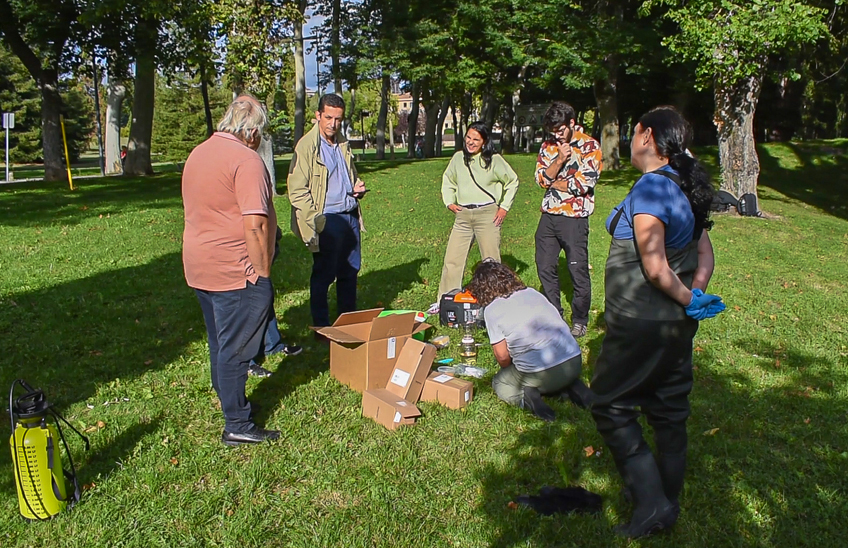Researchers study the environmental DNA of the Sadar River to monitor its biodiversity
Researchers from the BIOMA Institute and the Museum of Natural Sciences of Madrid develop a new technique with environmental DNA at campus of the University.

17 | 09 | 2024
Environmental DNA is the genetic material that living organisms release into the environment they inhabit. This DNA is dispersed in media such as water, soil or air and can be released through various sources, such as skin cells, feces, urine, scales, mucous membranes or hair.
Rafael Miranda, researcher of the Biodiversity and Environment InstituteThe project has met with researcher Ignacio Doadrio and other members of the Museum of Natural Sciences of Madrid to test a cutting-edge methodology for obtaining this environmental DNA in the Sadar River. By taking water samples from the river, this technique makes it possible to extract abundant information from the fish that inhabit it, allowing more to be known every day about the biomass of the habitats studied. The next step will be to know characters such as the issue of juveniles, the issue of adults or the sex of the individuals through the DNA and RNA obtained in the samples.
This subject of programs of study allows us to know better the state of health of the rivers in a less harmful way for the environment, what is happening to its inhabitants and, ultimately, to advance by obtaining knowledge to develop concrete and efficient measures for the conservation of the rivers.
This action is part of the work Living Lab "River Monitoring: Sadar River" in the framework of the Chair Campus Home, a broader project that, among other things, focuses on studying the freshwater biodiversity of the same and seeks to use the campus of the University of Navarra as a place of experimentation.
